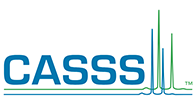
Each year, the United States observes National Hispanic Heritage Month from September 15 to October 15, by celebrating the histories, cultures, and contributions of those whose ancestors came from Spain, Mexico, the Caribbean, and Central and South America.
History
The observation started in 1968 as Hispanic Heritage Week under President Lyndon Johnson and was expanded by President Ronald Reagan in 1988 to cover a 30-day period starting on September 15 and ending on October 15. It was enacted into law on August 17, 1988.
The starting date of September 15 is significant because it is the anniversary of independence for Latin American countries Costa Rica, El Salvador, Guatemala, Honduras, and Nicaragua. In addition, Mexico and Chile celebrate their independence days on September 16 and September 18, respectively, and Belize on September 21. Also, Columbus Day or Día de la Raza, which is October 12, falls within this 30 day period.
Since its founding, our country has drawn strength and insights from Hispanic writers, scientists, soldiers, doctors, entrepreneurs, academics, and leaders in labor and government. Yet, it wasn’t until 1959 that the first Hispanic American was awarded the Nobel Prize in physiology or medicine. Severo Ochoa won for his discovery of an enzyme that can synthesize ribonucleic acid – a vital advance in the breaking of the human genetic code.
National Hispanic Heritage Month provides a reminder that diversity is an asset – one that requires investment in order to grow. At a time when hiring qualified candidates is one of the greatest challenges facing our industry, investing in diversity is one way to begin to solve the crisis. But it requires time and commitment.
STEM Education
In this 2020 report titled Hispanics and STEM, the Student Research Foundation found that liking STEM is the first step towards pursuing a career in STEM. Hispanic youth are typically underrepresented in STEM fields. The report posits that preparing these students for careers in STEM is an important step in increasing the available workforce. Encouragingly, the interest gap between Hispanic students and traditional STEM students has virtually disappeared. However, hurdles remain to Hispanics taking and completing the required STEM coursework. The report also identified action steps such as ensuring STEM equity in schools regardless of zip code and supporting postsecondary education across the spectrum.
Bridging the Gap
One example in our industry of this type of action is the Bridging the Gap collaboration between Merck, Montgomery and Bucks County Community Colleges and Jefferson University, and Jefferson Institute for Bioprocessing (JIB) to create NIIMBL Education Platform (NEP) to increase training capacity to address the critical shortage of an appropriately trained entry-level workforce in the biomanufacturing industry.
Next Steps
For our members who would like to take individual action, one resource you may find helpful is the Society of Hispanic Professional Engineers (SHPE). Like CASSS, SHPE is a professional association. They are working to bridge the gap between Hispanics and STEM by offering training, mentorship, and programming for the Hispanic community in or pursuing careers in engineering.
Hispanic Heritage Month is a time for reflection on the contributions of persons of Hispanic descent – and an opportunity to embrace and value the amazing diversity of talent in this world. Currently about 6% of CASSS’ members are from Latin America. And many more are of Hispanic descent. As we seek to address the challenges of the future, workforce diversity, including ensuring more Hispanics are brought into the field of biopharmaceutical development, is more than nice – it is necessary.

